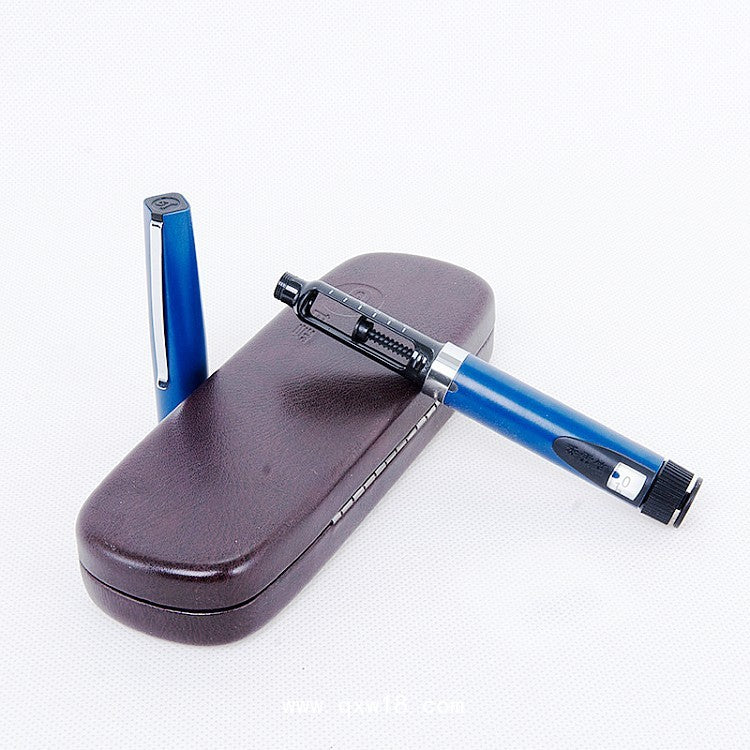
Mastering Insulin Pen Usage: A Comprehensive Guide to Safe and Effective Administration
Share
Optimizing Your Pen Insulin Experience: From Preparation to Mastery
In the quest for simplified insulin delivery, understanding the nuances of pen insulin usage is pivotal. This comprehensive guide walks you through each step, ensuring not just accurate injections but also fostering a sense of confidence and control in your diabetes management routine.Navigating insulin therapy with confidence begins with understanding the art of using a pen insulin effectively. From meticulous preparation to proper storage, ensuring a smooth journey towards optimal diabetes management.

Setting the Stage for Success
Preparation Protocol for Insulin Pen Users
-
Pen Components Overview
-
Pen Cap: Safeguards your insulin pen when not in use.
-
Insulin Dose Selector Button: Adjusts the dosage you need with precision.
-
Rubber Seal: Ensures insulin freshness and prevents leaks.
-
Dose Reservoir Window: Displays selected dose clearly.
-
Needle Assembly:
-
Outer Cap: Shields the needle before use.
-
Inner Cap: Protects the needle further; discard after removal.
-
Protective Seal: Peel off before attaching the needle.
-
-
Step-by-Step Initiation:
-
Prepare Thoroughly
-
Always begin with clean hands, dried meticulously.
-
Gather all necessary items, including a fresh needle.
-
Peel the needle's protective seal carefully and attach it securely to the pen, discarding the outer cap responsibly.
-
-
Fresh Needle Every Time
-
Adhere strictly to using a new needle for each injection to prevent contamination and pain.
-
-
Inspect & Rotate
-
Check the insulin pen's expiration date and follow disposal guidelines—usually within 4 weeks post-opening or as directed.
-
For cloudy insulins (like NovomixR), remove the inner cap and proceed with mixing steps.
-
Ensuring Injection Safety
The Vital Safety Check:
-
Turn the dose selector to "2" units for a safety test.
-
If using clear insulin, skip to the next step.
-
Gently roll the pen between palms for 10 counts and then up and down 10 times to mix without shaking.
-
Confirm a tiny insulin droplet at the needle tip; if not visible after 3 tries with a new needle, replace the pen.
Section 3: Dosing and Site Selection
-
Setting the Correct Dose
-
Adjust the selector to your prescribed dosage. Correct any overshoot by returning to "0" and redialling.
-
-
Injection Sites
-
Abdomen is a popular choice, maintaining a 2.5-5cm distance from the navel.
-
Rotate injection spots, keeping a 2-3cm gap between each, to avoid tissue damage.
-

The Injection Process
-
Site Preparation
-
Cleanse the injection site with an alcohol wipe.
-
-
Administering Insulin
-
Pinch the skin gently, hold the pen at a 90-degree angle, and press the injection button till "0".
-
Hold for 10 seconds before gently removing the needle and releasing the skin fold.
-
Post-Injection and Storage
-
Aftercare
-
Apply light pressure at the injection site for 5 seconds; avoid rubbing.
-
-
Disposal and Storage
-
Dispose of used needles immediately in a puncture-proof container.
-
Opened insulin should be refrigerated after each use, away from direct sunlight.
-
-
Unopened Insulin Storage
-
Maintain unopened insulin vials in the refrigerator as per manufacturer's recommendations.
-

By meticulously following these steps, you're not only ensuring a safe and effective insulin administration routine but also fostering a sense of control and confidence in managing your diabetes. Remember, consistency and proper technique are key to a healthy, balanced life.
